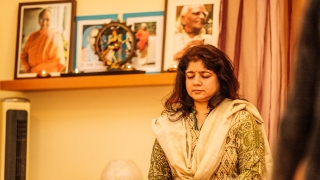Here is what I think and have understood what beauty is and here is my recipe to invite it at many levels of my being on an everyday basis.
ETYMOLOGY, TEXTS & MORE - BEAUTY
Beauty means many things to many people. Yet we can consolidate all of those varied definitions under some kind of experience. So what is beauty from vedic and textual point of view?
Etymology: Beauty is called "saundarya' in sanskrit. When we understand it in sanskrit, it brings into light what it actually means. The etymology points out two parts "sa" and "und", where "und" means to be soaked/immersed in and "sa" means pleasant / positive / good. To sum up, the word means to be soaked in the pleasantness, goodness and positivity of the mind.
May the beauty that we see outside, awaken the beauty that we are within.
TYPES OF BEAUTY
- Physical Beauty - Roopam: Pledge to keep your skin healthy this year! Use products that have been not only sourced right but are real food for your skin. Hint: Use Yogis Glow as a 3-in-1 program of Wash-Scrub-Mask for a skin that radiates health. I would recommend using it with water for wash, ghee / olive oil for scrub and rose water for mask.
- Vibrational Beauty - Saundarya Lehar: May there be the continuous rising of the waves of beauty from your heart. Practice the most powerful mantra on beauty dedicated to Goddess Lakshmi. Om Shrim Shriye Namaha
- Mental Beauty - Chitta Prasadanam: Silence is one of the finest practices to witness the chaotic waves of the mind as well as to clam them down. There is a day dedicated to silence known as Mauni Amavasya.
- Everlasting Beauty - Laya Yoga: Yogis have talked about the Laya as the real Yoga, the yoga of dissolution. It is a topic kept very much limited to the oral tradition of passing on knowledge.
WHAT DO THE TEXTS SAY ABOUT BEAUTY?
Patanjali Yoga Sutra: 1. 33
Patanjali refers to beauty as "chitta prasadanam" in Yoga Sutras. By developing the qualities of friendliness, compassion, goodwill and indifference we can consistently maintain a peaceful / beautiful state of mind.
Saundarya Lahiri: 95
Here beauty is described as waves of bliss, happiness and beauty arising out of a mind that is internalized. Such a mind is pleasant and awakened in all the three states (Tripura): awake, dream and deep-sleep. Such a person becomes the ruler of Tripura and experiences the blessings of Tripura Sundari.
Upanishads:
Satyam Shivam Sundaram
That which is truth and awakened is beautiful. That which is pure and eternally Blissful is beautiful. Here Shiva is referred to as "Sundereshwar" which means "God of beauty", however Shiva here is not a God but an awakened state of mind, consciousness itself.
Ayurveda:
roopam, gunam, vayastyag, iti shubhanga karanam
There are three types of beauty dsicussed in Ayurveda.
Roopam: That which is the beauty of health as radiance, immunity and energy
Gunam: That which shines as the beauty of a satvik (pure, clear and calm) mind
Vayastyag: that which is everlasting beauty of consciousness, that which is not bound by age
May we all soak in the ocean of beauty again and again. May we share those ripples of beauty, with our speech as well as silence, with our movement as well as our stillness, with our action as well as Inaction, with our choices as well as our moderation
STAY IN TOUCH
Start your FREE subscription to Indu Arora's newsletter to get more on Yoga and Ayurveda here
Say hello on Instagram
Subscribe to my Youtube Channel.



